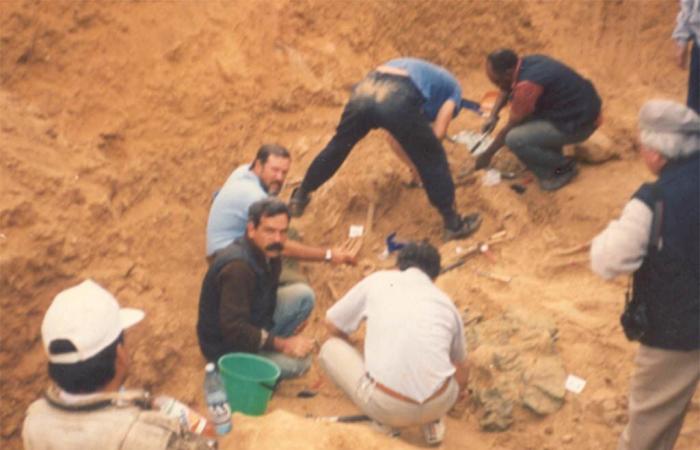On June 28, 1997, the bodies of Che and six other fellow fighters were found on the runway of an airport in the town of Vallegrande, Bolivia, in the place where 30 years earlier he was murdered by military personnel from that country.
The search was activated in November 1995, after the statements of the soldier Mario Vargas Salinas, a former high-ranking officer of the Bolivian Armed Forces, who confessed to knowing the location of Che’s remains.
The historical leader of the Cuban Revolution, Fidel Castro, appointed the doctor of Medical Sciences, Jorge González, then director of the Institute of Legal Medicine in Havana, to lead the scientific search, which had to be carried out under multiple pressures due to its symbolism.
The discovery was made one day after the Bolivian government gave the Cubans 48 hours to finish.
Adhered to Che’s remains, part of his olive green jacket was found and also pieces of the leather belt he was wearing the day he was murdered.
The decades-long collection of information and testimonies by Cuban and other national researchers was key and facilitated the work of geologists, forensic anthropologists, biologists, geophysicists and other Cuban social science scholars from 15 institutions who worked on the search.
In custody, the remains were studied on Bolivian soil and subjected to numerous identification tests, and on July 12, 1997 they arrived in Havana, where they were received with honors and respect.
Upon arrival, Che’s daughter Aleida Guevara expressed: «Today his remains arrive to us, but they do not arrive defeated; They come converted into heroes, eternally young, brave, strong, bold. No one can take that away from us; “They will always be alive with their children, in the town.”
An entire generation of Cubans was marked by the images of the arrival of the coffins at the military airport of San Antonio de los Baños and their subsequent transfer to the mausoleum in the city of Santa Clara, in central Cuba, where Che fought one of the most important battles of the war of liberation on the island.
Thousands of people visit the facility every year, which also houses documents, photos and historical pieces related to the life and work of the man also known as the Heroic Guerrilla Fighter.
rgh/ebe


